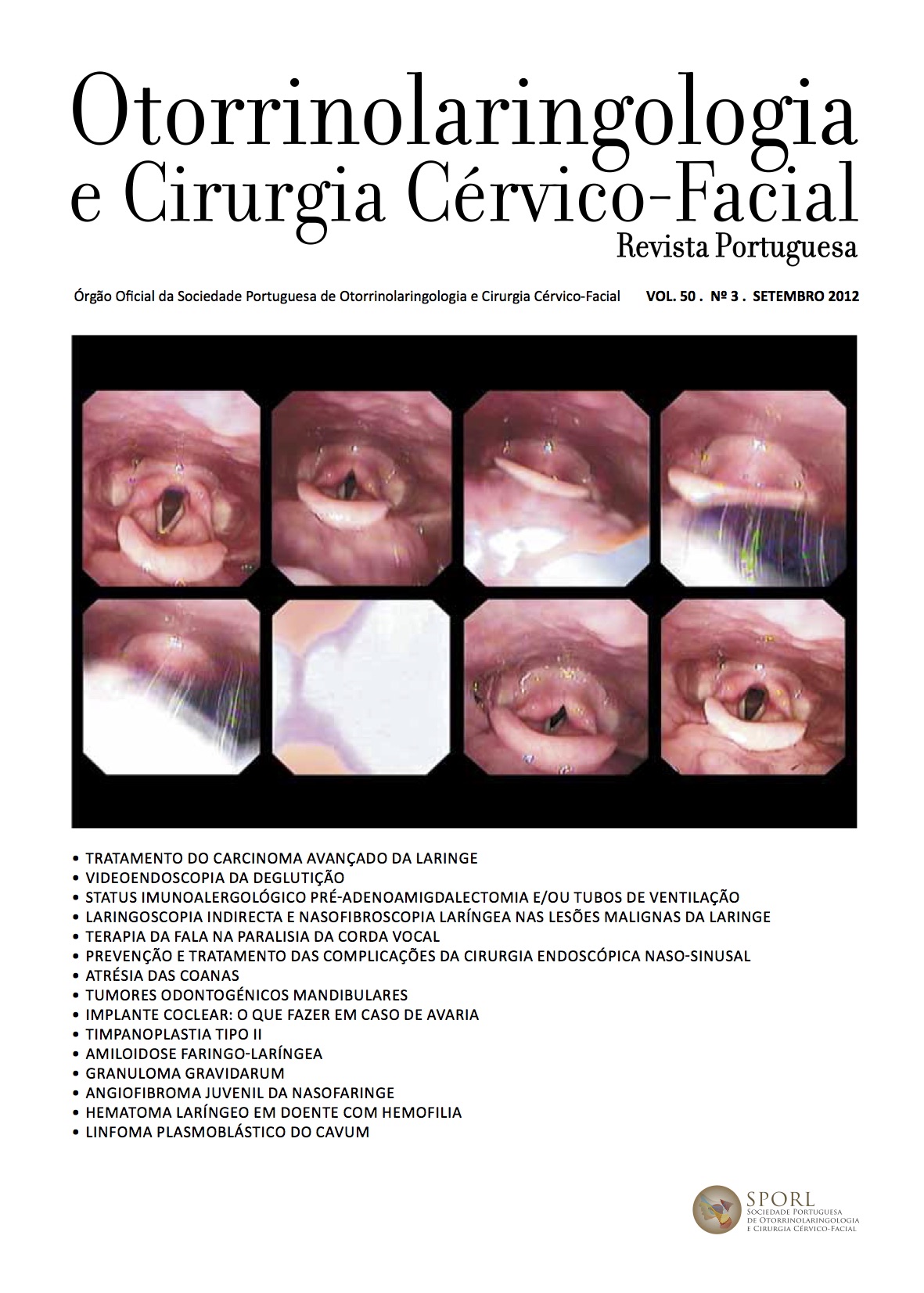Type II tympanoplasty - Clinical experience
DOI:
https://doi.org/10.34631/sporl.120Keywords:
Type II tympanoplasty, allogenic ossicular prosthesis, remodeled incus, chronic otitis mediaAbstract
Introduction: Tympanoplasty associated to ossiculoplasty has the objective to reconstruct the tympanic membrane and the ossicular dynamics in order to restore the isolation of the middle ear and of hearing. Several materials have being used to recreate the sound transmission mechanism of the middle ear. The substitution or the reconstruction includes the use of biologic or aloplastic materials.
Materials and methods: The authors describe two reconstruction methodologies of the ossicular chain trough type II tympanoplasty making a comparative analysis between: 1) Use of PORP and 2) Use of shaped incus interposed between the stapes and the tympanic membrane.
Results: The use of partial ossicular replacement prosthesis (PORP) for interposition between the tympanic membrane and the stapes was used in situations of ossicular erosion or in situations where it was necessary to remove the incus and the malleus for a more effective control of the chronic infectious process. The shaped incus was used with the knowledge the the underlying disease was controlled. Myringoplasty was executed with temporal muscle fascia using underlay or overlay technique depending on the dimension and location of the tympanic perforation. Both alternatives were effective in what concerns recovery of the hearing loss.
Conclusion: The ideal prosthesis for ossicular reconstruction must be biocompatible, stable, secure, easy to use and capable of resulting in a better sound transmission. The prosthesis selection is related with all these factors associated to the pathology and the intraoperatory conditions. The aloplastic PORP’s and the autologous material prostheses have proved to be equally effective restoring middle ear function.
Downloads
References
Fisch U, May J, Linder T. Tympanoplasty, mastoidectomy, and stapes surgery. New York, Thieme; 2008
Battista RA. Middle Ear, Ossiculoplasty. 2008 Februry. http://emedicine.medscape.com/article/859889
O’Reilly RC, Cass SP, Hirsch BE, Kamerer DB, et al. Ossiculoplasty using incus interposition: hearing results
and analysis of the middle ear risk index. Otol Neurotol. 2005 Sep;26(5):853-8
Jha DS, Mehta DK, Prapajati DV, Patel DD, et al. A Comparative Study of Ossiculoplasty by Using Various graft Materials. NJIRM. 2011;2(4):53-55
Gajjar Y, Aiyer R. Use of a Remodeled Autologous Incus as an Ossicular Prosthesis. World Articles in Ear, Nose and Throat.Jun 2010; 3(1). www.waent.org
Ruah C, Ruah S. Otite Média, Lisboa, Lidel – edições técnicas,lda, 2010
Berenholz LP, Rizer FM, Burkey JM, et al. Ossiculoplasty in canal wall down mastoidectomy. Otolaryngol Head
Neck Surg 2000 Jul; 123(1Pt1): 30-3.
Rondini-Gilli E, Grayeli AB, Borges PF, et al. Ossiculoplasty with total hydroxylapatite prostheses anatomical functional outcomes. Otol Neurotol 2003 Jul; 24(2): 543-7
Neudert M, Zahnert T, LasurashviliN, et al. Partial Ossicular Reconstruction: comparison of three prostheses in clinical and experimental studies. Otol Neurotol 2003 Jul; 24(4): 543-7






